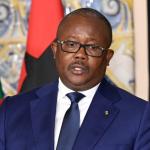Foreign aid has played a critical role in the development of many African nations over the decades. However, a growing number of countries are demonstrating that economic independence is achievable through strategic governance, resource management, and sound policies. Among them are Burkina Faso, Botswana, South Africa, Namibia, and Ghana. Let’s explore how these nations are reducing their reliance on aid and building self-sustaining economies.
Botswana

Botswana’s transformation from one of the poorest nations at independence in 1966 to one of Africa's most stable and prosperous economies is nothing short of remarkable. The country effectively leveraged its diamond wealth through strategic policies that prioritized reinvestment into education, healthcare, and infrastructure.
What sets Botswana apart is its disciplined approach to governance, which includes anti-corruption measures and a strong emphasis on fiscal responsibility. By managing foreign aid strategically and aligning it with its national goals, Botswana has minimized aid dependency and built a robust economy that relies on domestic resources.
South Africa

As the second-largest economy in Africa, South Africa funds most of its development through domestic resources. While it does receive foreign assistance for specific programs like healthcare and education, aid constitutes only a small fraction of its GDP.
South Africa’s industrial base, strong financial systems, and diverse economy—spanning mining, manufacturing, and services—have enabled the country to maintain relative self-sufficiency. Strategic investments in renewable energy and technology are further diversifying its economic base, reducing vulnerability to external shocks and dependence on aid.
Namibia

Since gaining independence in 1990, Namibia has utilized its abundant natural resources—especially minerals like uranium and diamonds, as well as a rich marine ecosystem—to fuel its economy. The government’s focus on sustainable resource management and policies encouraging value addition in the mining and fisheries sectors have significantly reduced the country’s need for foreign aid.
Namibia has also invested heavily in renewable energy, making strides toward achieving energy self-sufficiency. This shift not only strengthens its economy but also positions Namibia as a leader in sustainable development on the continent.
Ghana

Ghana has actively worked to reduce its dependency on foreign aid, particularly between 2000 and 2015, when its aid reliance dropped from 47% to 27%. This progress is largely attributed to the country’s diversified economy, which thrives on cocoa, gold, and oil exports.
The government has also implemented policies to increase domestic revenue through improved tax collection systems and reduced budget deficits. Additionally, Ghana’s investment in industrialization and renewable energy projects has bolstered its economic resilience, moving it closer to achieving full self-reliance.
Burkina Faso
Burkina Faso is making bold strides toward economic self-reliance despite grappling with political instability and environmental challenges. The country has prioritized agricultural modernization to drive development. Initiatives like the Plan National de Développement Économique et Social (PNDES) focus on enhancing agricultural productivity by introducing climate-resilient crops, expanding irrigation systems, and investing in value chains for its key exports like cotton and livestock.
Moreover, Burkina Faso is tapping into its rich gold reserves, which now contribute significantly to government revenue. The government has been negotiating better terms with mining companies to ensure more equitable sharing of profits, which in turn funds education, healthcare, and infrastructure development. These efforts showcase how Burkina Faso is working to reduce reliance on external assistance by maximizing its domestic resources.
Conclusion
The journey toward economic independence is neither quick nor easy, but the examples of Burkina Faso, Botswana, South Africa, Namibia, and Ghana prove that it is possible. These nations have demonstrated that with strategic governance, sustainable resource management, economic diversification, and investment in human capital, countries can reduce reliance on foreign aid and build self-sufficient economies.
Their progress serves as an inspiration to the rest of Africa, showing that the continent has the potential to rise above external dependency and create a future driven by African innovation, resilience, and determination. As more nations adopt similar strategies, Africa is poised to become a global leader in sustainable development and self-reliance.
The time has come to celebrate and support these efforts as they shape a brighter and more independent future for the continent.
Leave a comment
Your email address will not be published. Required fields are marked *




